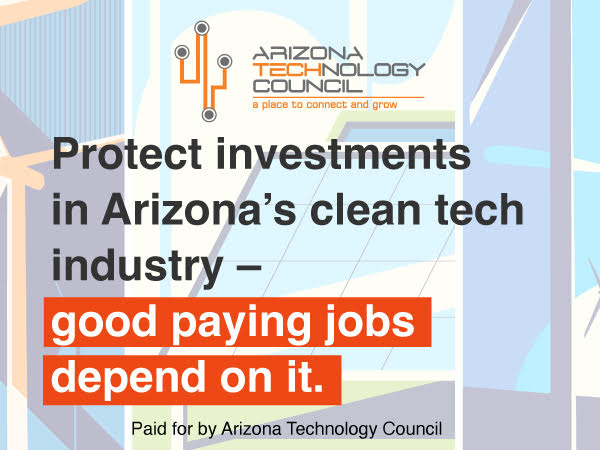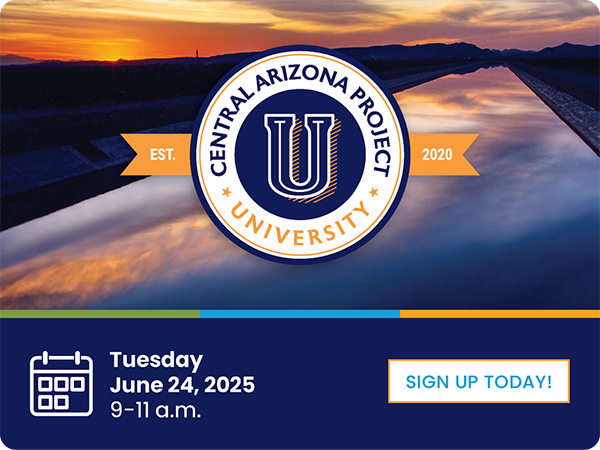Amanda Aguirre was born and raised near the border in Sonora, Mexico, at a time she describes as friendlier. She earned a bachelor’s degree in chemistry, and she discovered her love for public health working at a children’s hospital in Los Angeles while earning her Master’s degree. She settled in Arizona in 1987 and was appointed to the Arizona House in 2003 in a Yuma-area district and served there until 2006 when she was elected to the Senate for two terms. She has led the Regional Center for Border Health since 1991. The following interview is part of the Arizona State Library Oral History Project, which started in 2006 and is printed here as an occasional feature called In Their Words. Below are excerpts from Aguirre’s 2014 interview with the project in which she discusses growing up at the border, bipartisanship in the Legislature and her appointment as a Democrat co-chair of the Joint Legislative Committee to the chagrin of the House speaker. The interview has been edited for space and clarity.
Life on the border

It was nothing like it is today. Back then, it was a very friendly border. People knew each other. You could cross the border, say we’re going to go and buy some groceries and come back, and we didn’t even show papers to cross the border. There were few families. The town was about 10,000, no more than 20,000, and so families knew each other and all of us, even though we had legal papers to cross … but still the officers were, you know, “Oh yes, we know them, they’re family so and so,” and move (us) across. And I remember when my parents built their home in 1963 right across the International Avenue, which borders right with the fence that divided the two countries, and I remember playing baseball and softball, and our ball going across the fence, and then the officers, the border patrol officers, will stop and play with us. So … we give them water, we give them sodas, and, you know, everybody was just very friendly. So it was a very different time.
The influence of growing up on the border on her politics
I think that justice is looking at the issues from the human face, putting a human face to the issues,. I think that has been my priority. I think I’m a business woman, nonetheless, but I think that bringing that human face to the table makes a difference when you’re making decisions. How you do a piece of legislation, a law can impact families, and so whether it impacts them economically, advances the agenda for families, whether it’s education, the accessibility to, you know, health care, to just giving people opportunities to be the best. Certainly, I was given that, and I believe in that.
Bipartisanship
Well, it can become very extreme to both sides, where some of my colleagues in the Democratic caucus wouldn’t say good morning to some of the members of the Republican caucus in the elevator. It’s very uncomfortable when you’re there, you’re always reading everybody, and that person never looks at the other one and the other one doesn’t look at them, and it’s just not a civilized way for me. I didn’t grow up that type of person. I’m a friendly person. I’d like to see that cordial greeting, at least. That’s how I grew up, with good manners, and so it can be very tense. I try to understand most of the time, 90% of the time, why my colleague Republican stands on a different issue that I stand for, and I tried to understand that. Some of them were open to discuss issues. Some of them just don’t care. They just sit and you work party lines.
I sort of worked bipartisan on (so) many issues that I was criticized by my own Democratic caucus. I voted because of my constituents. I got farmers, I got military, and nonetheless I felt that I needed to vote what was best, and it happened to be a Republican bill that was addressed in my rural issue. I think the example of that would be the medical malpractice bill that Senator Allen has. I think two of us voted on (it), only two Democrats, and I got criticized for that, including from Governor Napolitano, who campaigned very hard for me, for us, in 2000.
I was passing a bill in the Senate, and I was in the Water and Environment Committee, I believe, and I had to step out and come back and step out because my bill was in another committee, the Judiciary Committee, and was being heard and so I was apologizing for coming and going. And I come back, and they were in the middle of the vote, and I noticed that the Democrat next to me voted no. So I said, “Okay, I might as well just play it safe, and I’m going to vote with the Democrats,” and I voted no. And then I asked the staff, which bill did we vote on? And I realized that I had voted no on a bill that I had given my yes support to my Republican colleague. It was a rural area bill, and so I just felt horrible that I voted no instead of yes. So I got up and asked Senator Flake if he will reconsider the same bill for another vote, that I have committed a mistake. And so he said, “Well, I don’t know if we can do that.” And so the counsel and everybody was at the table and looking at all the rules, and said, “Yeah, the chair can reconsider.” So he did. And so I explained why I have not voted the way I wanted to vote initially, and I said I had promised the senator that I would support this bill, and I do support it, and I just want to give my yes vote, because that was my word that I gave her and and so everybody was like, “Wow.” I got a text message from one of the lobbyists sitting in the room that says, “Gutsiest move we ever seen, Senator. That’s why you’re so great. You always keep your word.” And I said, “We’ve never seen anything like this before?” And I thought, hmm. And I really felt that if I give you my support, you have my support. If I’m going to change that, I will let you know before I take action. And you don’t find that in many people. They just say, “Oh yeah, I will support you.” And then you find out they’ve never been there along the way, supporting you. And of course, my Democrat caucus was not happy that I voted yes because I voted against my Democratic members who were in opposition, but they were not representing rural areas, I was.
President Tim Bee
I had the pleasure to co-chair a joint legislative committee on caregiver standards that President Bee had asked me to serve. And I got a letter that says, “Senator Aguirre, you’re being appointed to co-chair the joint legislative committee.” And I’m like, “Oh my god, I’m a Democrat. I can’t co-chair things, you know, I’m a Democrat. You have to be two Republicans to be chairmen of the committee.” So I went back to President Bee and I said, “I think your secretary made a mistake, maybe because my name starts with an A like, they go first.” And he laughs and says, “No, Senator, we selected you because you’re the best person for this committee, regardless of your party. And I thought, “Wow.” Well, I find out that Speaker (Jim) Weiers had complained to President Bee and said, “How can you name a Democrat to co-chair this Joint Legislative Committee? She’s not a Republican. I’m not going to have my member of the House serve with another Democrat and co-chair this committee. And President Bee stood his ground and says, “No, we in our caucus selected Amanda. She’s an expert on this, and she will be, you know, she’s representing us on this. And so I got to co-chair a joint legislative committee, which I don’t know if anybody in the past has done that as an opposite party.



























